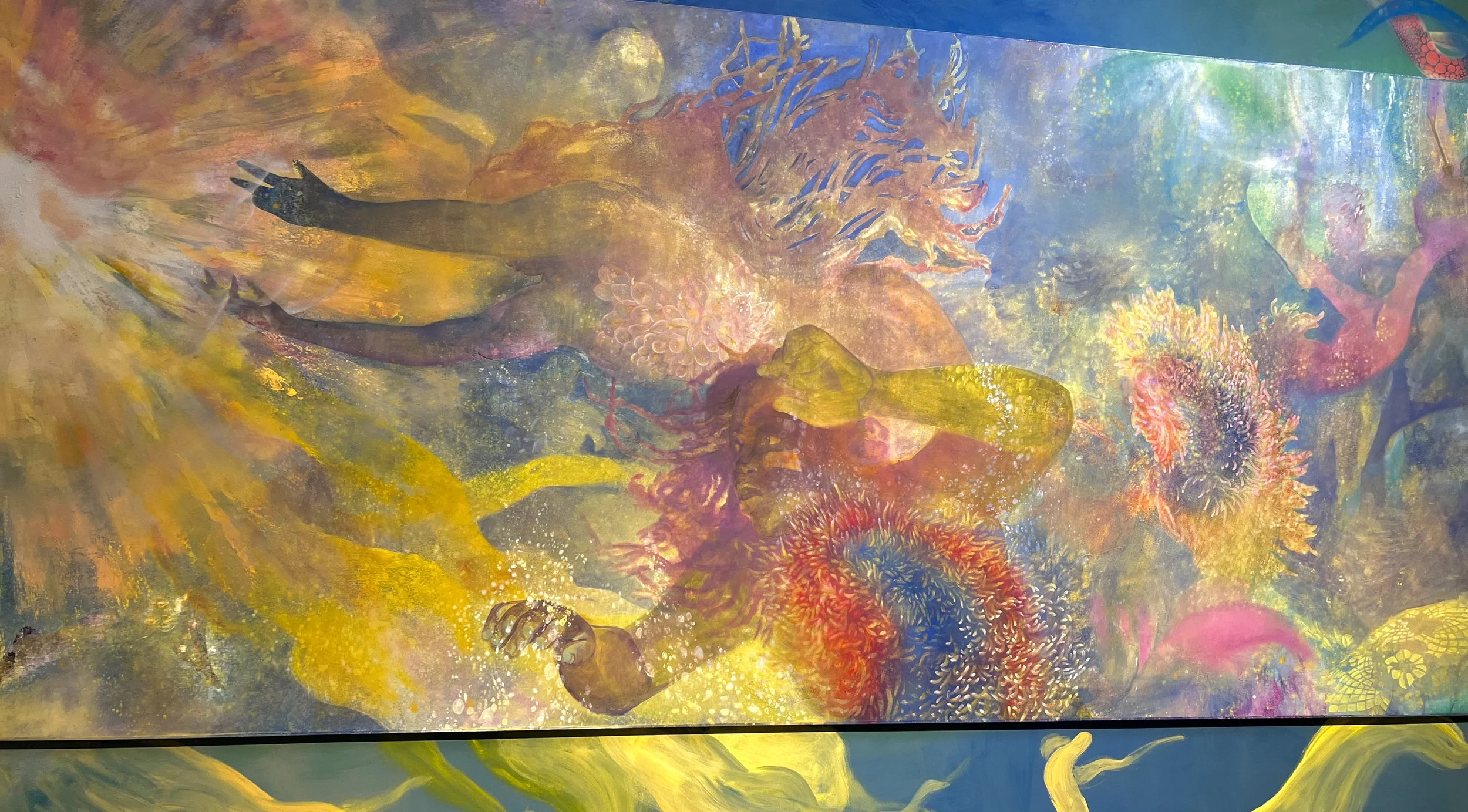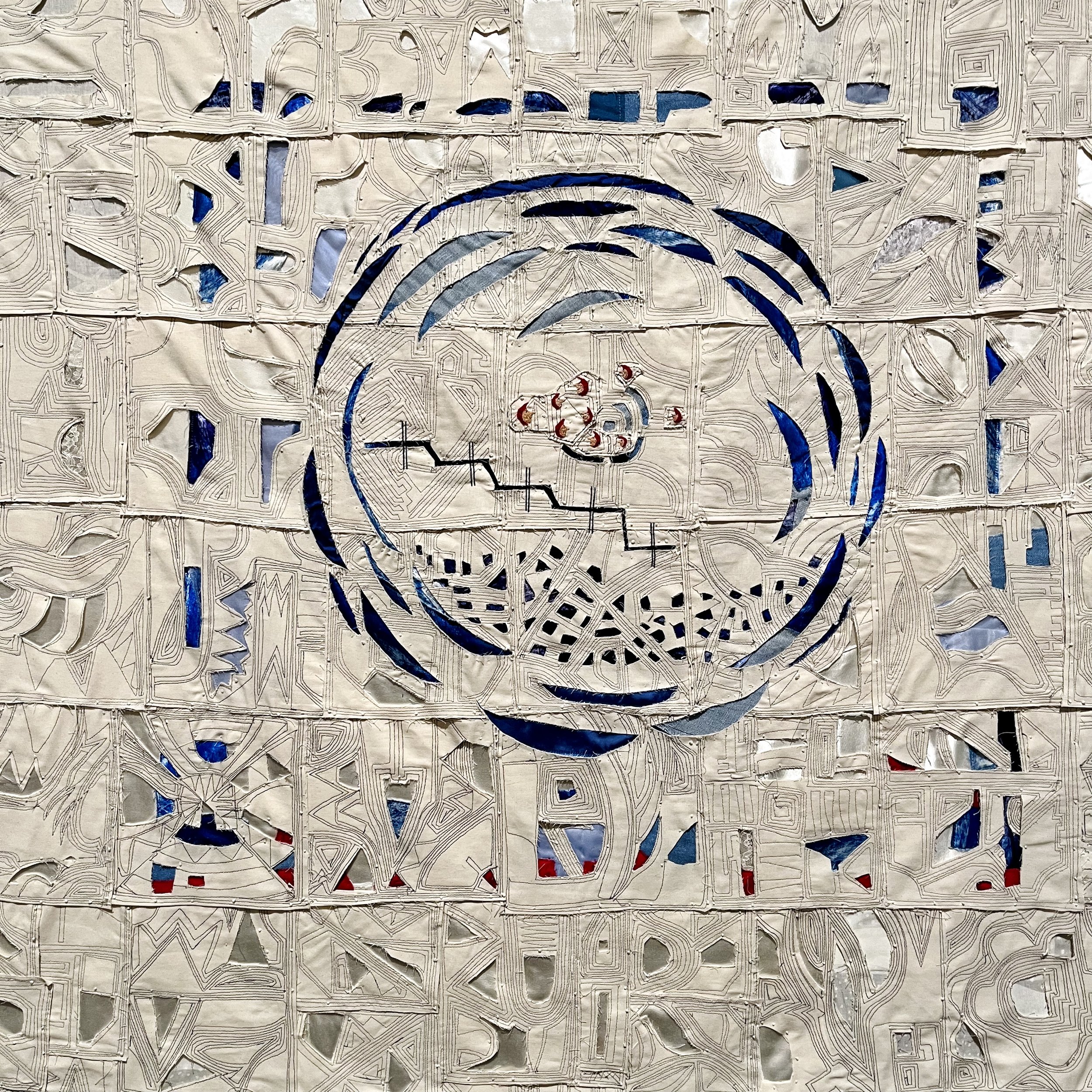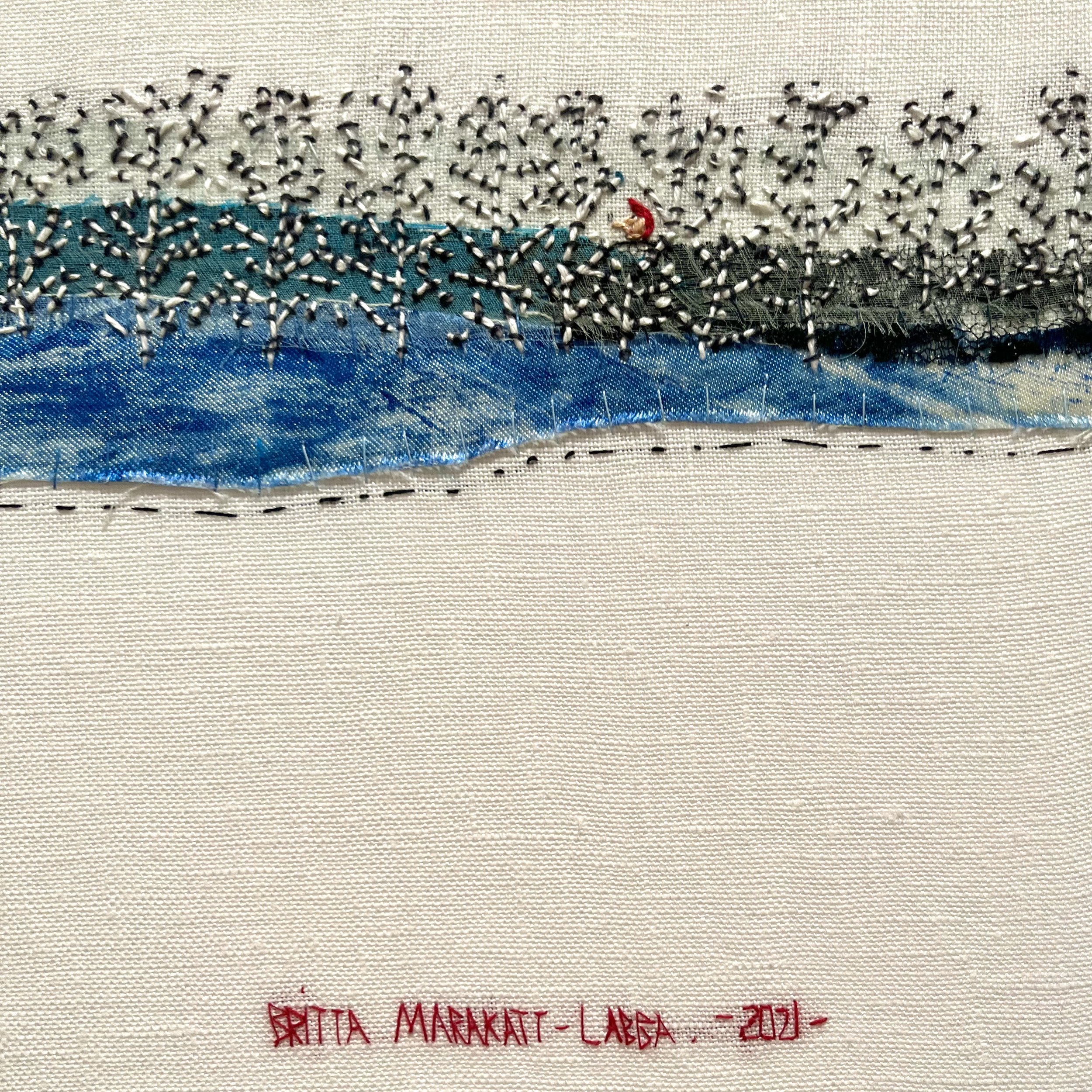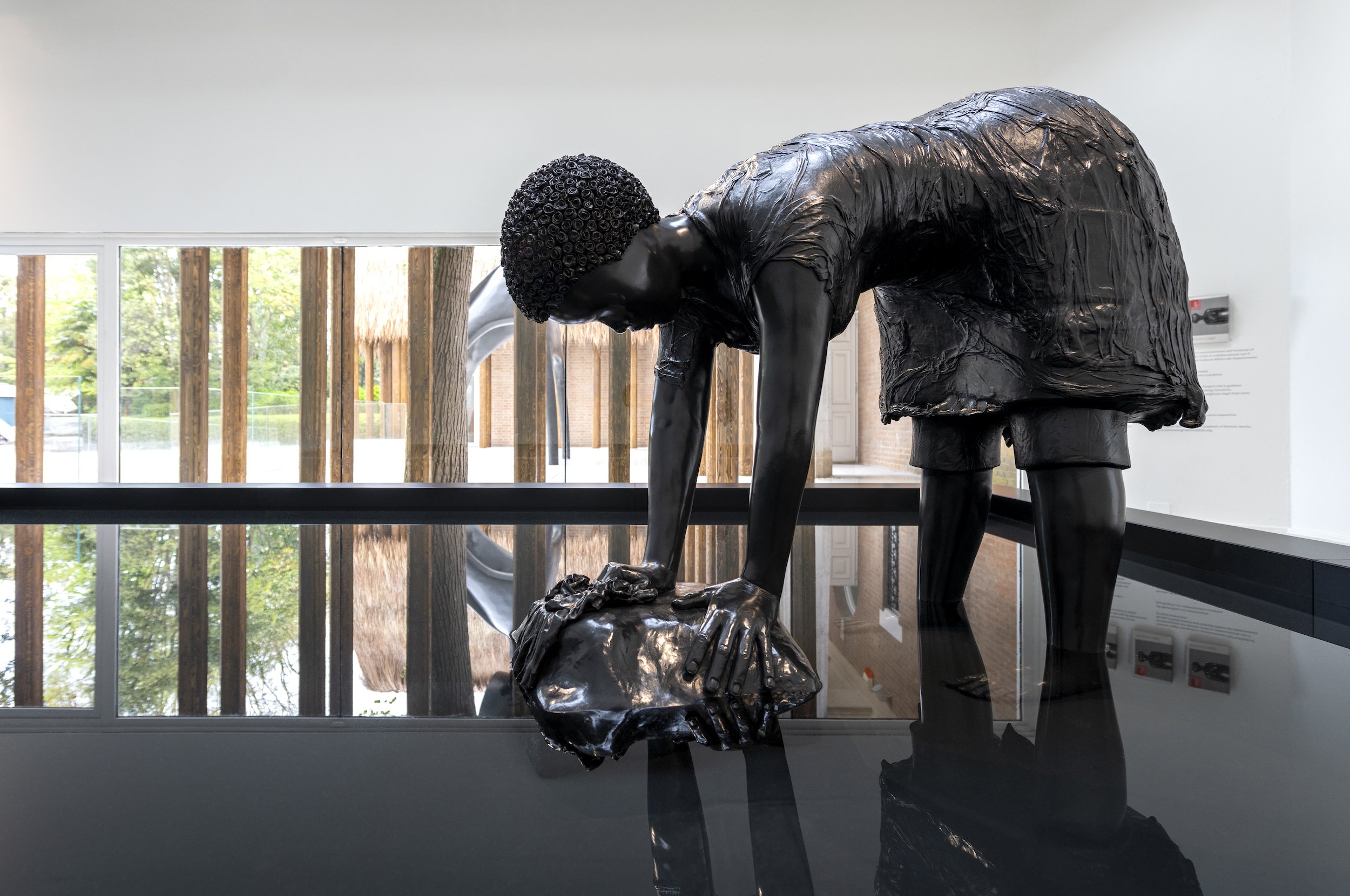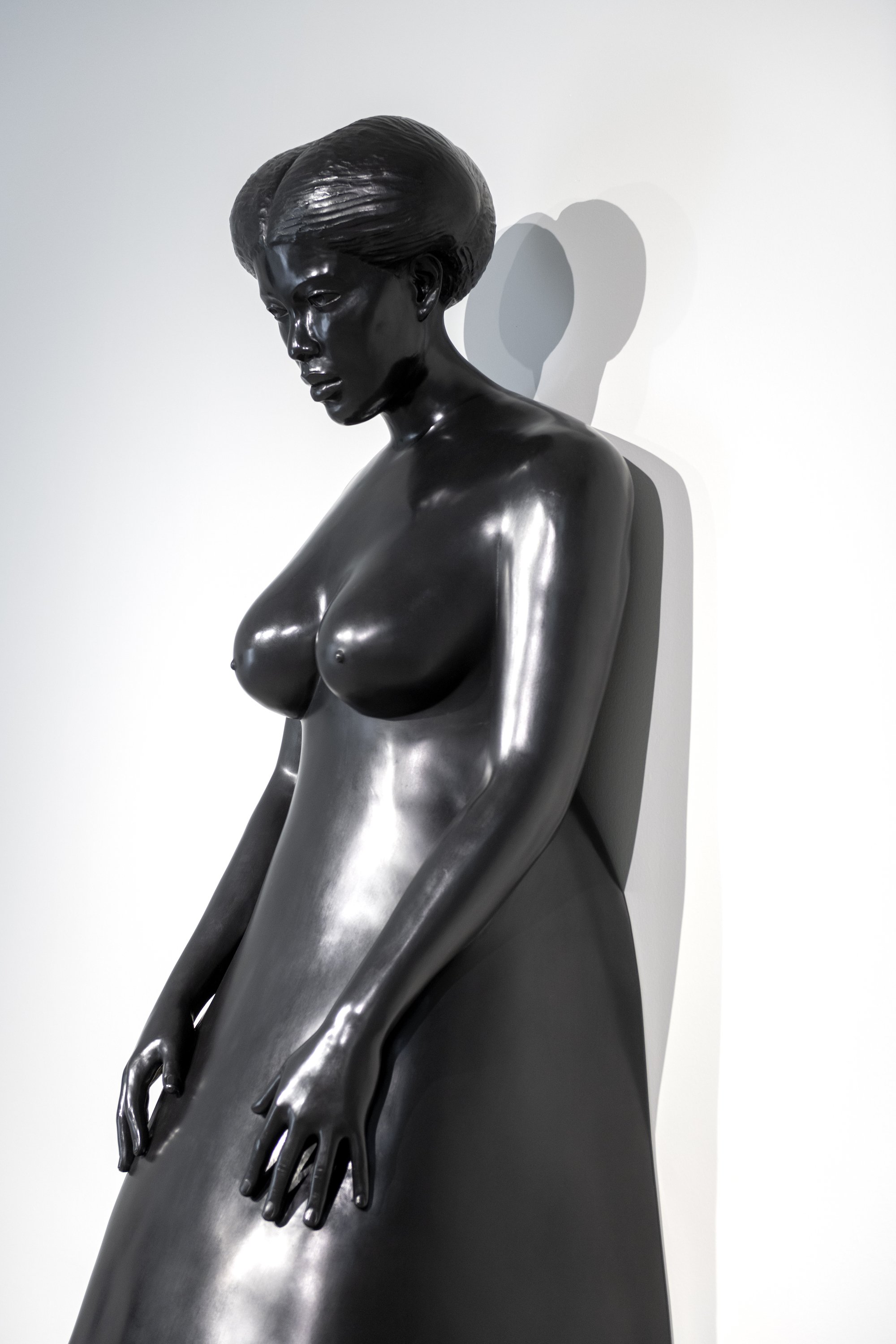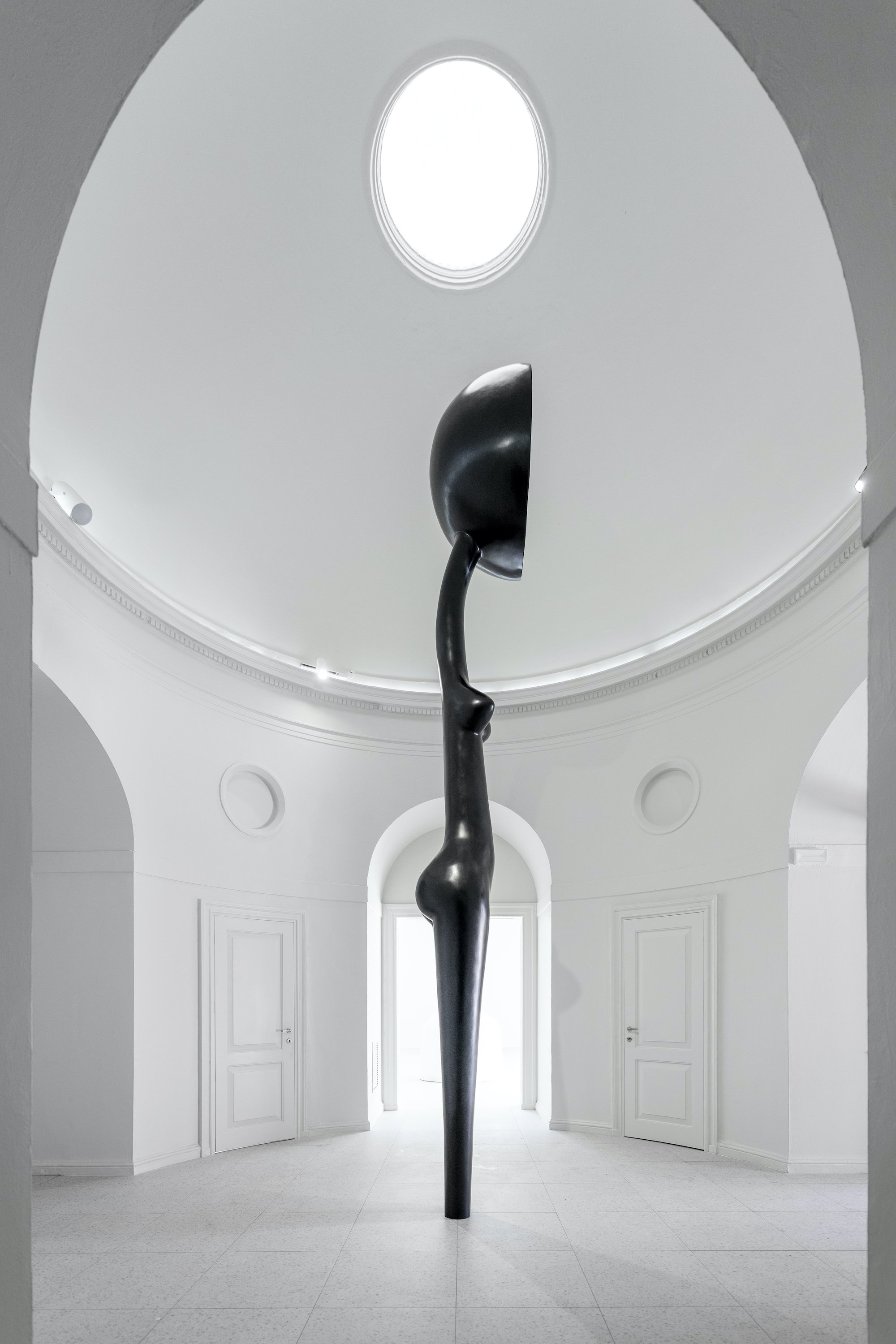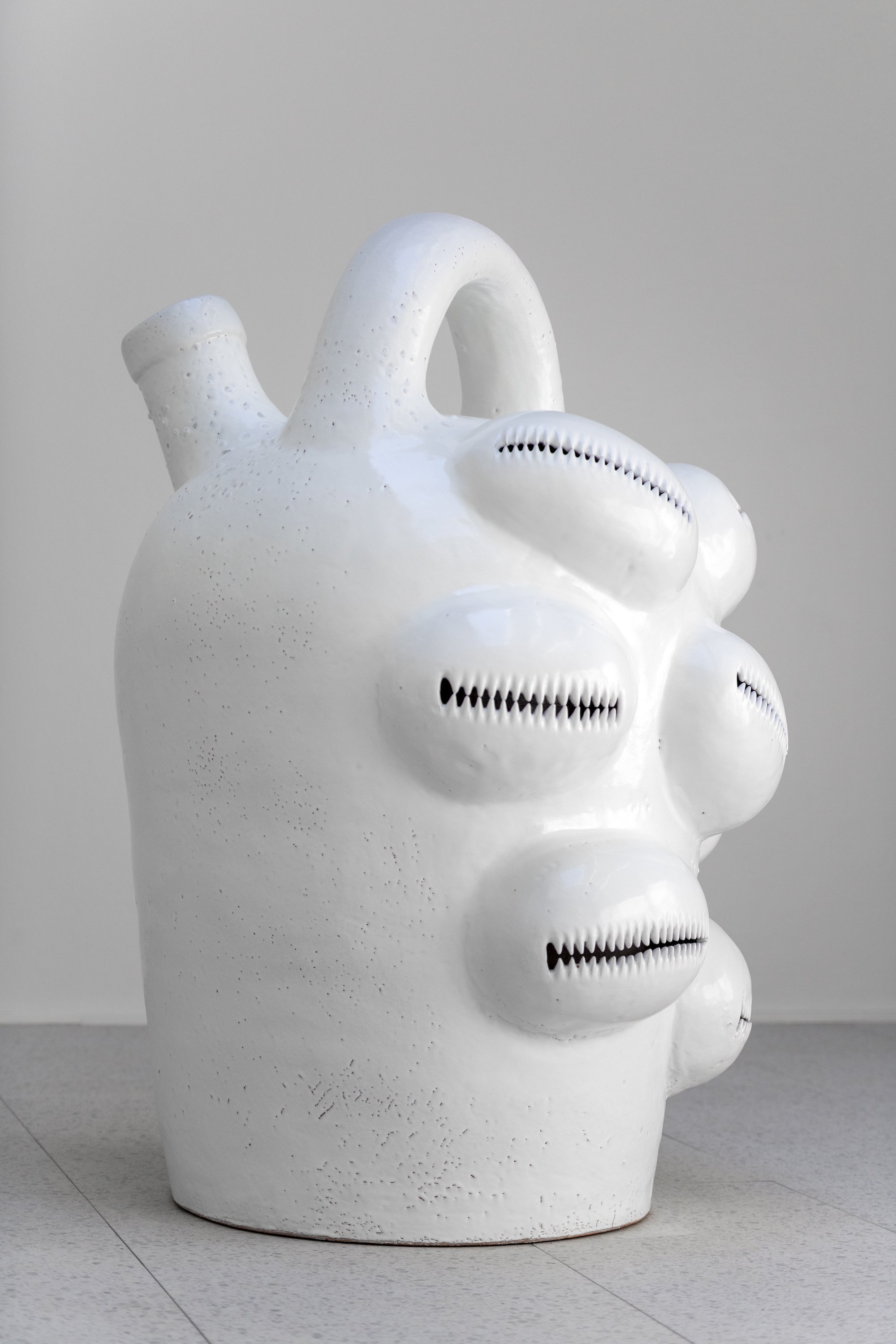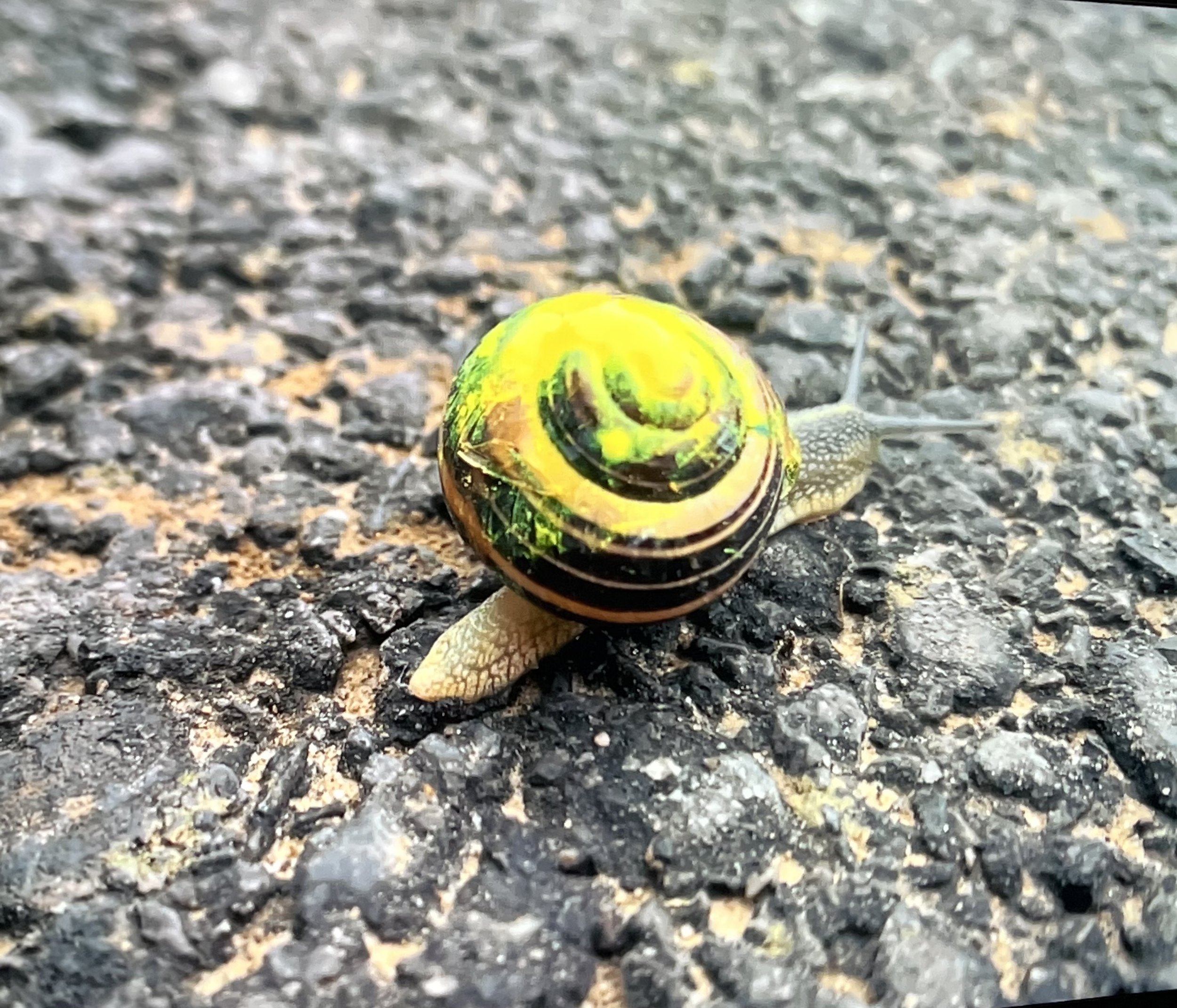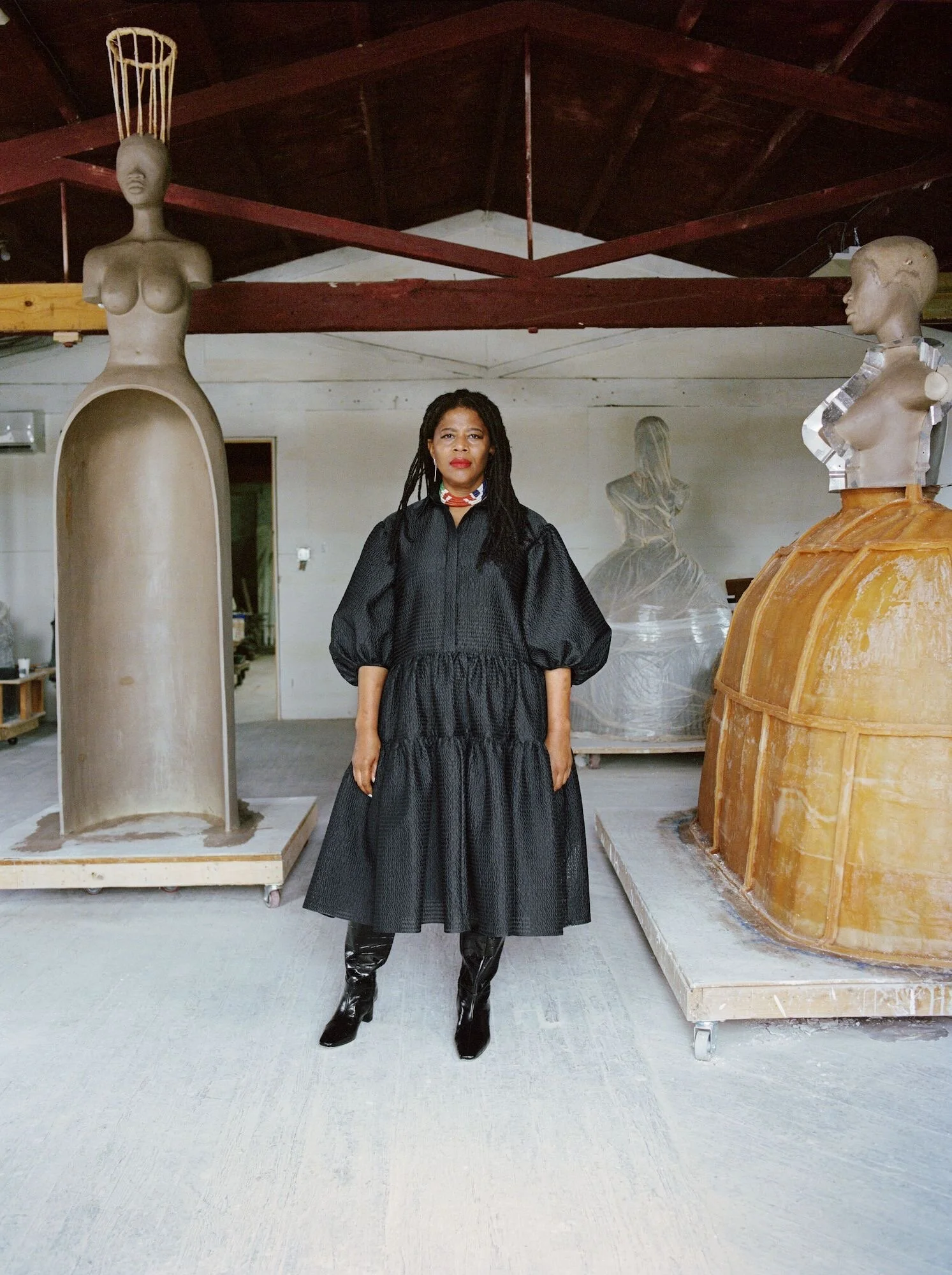Venice Biennale 2022, The Year of the Woman
All places derive meaning from their past, just as all people have a connection, recognized or not, to those who came before. This is not always obvious, but in Venice, history confronts us so viscerally, it would take great effort to ignore. Venice’s past accompanies us over 16th century bridges, admires ancient cathedrals across the lagoon, marvels at Tintoretto masterpieces on palazzo walls. Except for the sneakers, smartphones and rising seas, one might imagine not much has changed. Boats still transport people and goods from place to place. Every bottle of Aperol, Murano glass souvenir and gondolier’s striped shirt moves from water to storefront on dollies pulled by runners shouting “permesso!” In Venice every glance lands on a reminder of the sheer impossibility of the place, the magic of its contemporary existence.
A quiet moment on the canal. Photo: Robin Hauck
That conversation with the past influences so much of the work exhibited in the 59th Esposizione Internazionale d’ Arte of La Biennale di Venezia, which opened to the public April 23. During a time of heightened global anxiety over war, climate change and extremism fueled by communication technology, the Biennale opened its doors after a year’s Covid delay, to let artists respond in ways only artists can – confronting existential fear with emboldened hope and honoring the past while imagining possibilities for the future.
Throughout this decade, the art world has grappled with its sexist, racist past, confronting the social and economic power systems which granted generational prominence to white male artists and Eurocentric aesthetics. The Biennale turbo-charged this corrective imperative in theme, representation, exhibition and experience.
It helps to think about the sprawling Venice Biennale in three main parts: the main exhibition halls, collectively known as the Central Pavilion; the national pavilions (this year there are 80), and the adjacent shows mounted in churches, palazzos, warehouses and galleries all over the city. To see it all is virtually impossible with a realistic amount of vacation time, so careful planning is a must. Following is a look at some of the most captivating work on view this year in the main show and national pavilions, which you can catch between now and November 27, 2022 when the Biennale closes.
View toward the Central Pavilion at the Giardini. Photo: Robin Hauck
Central Pavilion “The Milk of Dreams”
This year’s show, comprised of works by more than 200 artists, builds upon the extraordinary central exhibition “Milk of Dreams” curated by Cecilia Alemani, Director & Chief Curator of High Light Art in New York.
Stretching across the massive Giardini and Arsenale pavilions, “Milk of Dreams” explores our fraught relationships to nature, technology, gender and each other - key questions of our age.
For the first time in the 127 year history of the Biennale, Alemani’s show features a majority of female and non-binary artists. Thanks to the work of many courageous curators and artists, the show acknowledges, memorializes and honors women throughout.
Leonora Carrington’s portrait of Max Ernst, at the Peggy Guggenheim Museum. Photo: Robin Hauck
After conducting hundreds of studio visits over Zoom during the pandemic, Alemani chose artists interested in what it means to be human, how the body relates to technology, and what responsibilities we have to the planet and each other.
“Milk of Dreams” comes from the title of a 1950’s children’s book by Surrealist painter Leonora Carrington, featuring fantastical tales connecting human, magic and animal worlds and imagining all set free. Taking cues from Carrington’s deceptively simple book, Alemani’s “Milk of Dreams” asks: how do we need to think about the relationship between human and machine and human and animal? And of course, what would the world look like without us?
The Biennale’s coveted Gold Lions for Lifetime Achievement were awarded to two women who have made unique and lasting contributions to contemporary art: Katharina Fritsch and Cecilia Vicuña.
Düsseldorf-based artist Katharina Fritsch, whose room spanning sculpture Rattenkönig (Rat King) sent shock waves through Venice in 1999, greets visitors to the Girardini this year with her life-size, powder green elephant, cast from an actual animal.
Alemani has said that Fritsch’s incomparable contribution to contemporary sculpture involves creating “figurative works that are both hyperrealistic and fanciful: copies of objects, animals, and people, faithfully rendered in every detail, but transformed into uncanny apparitions… it feels like one is looking at monuments from an alien civilization or artifacts on display in a strange post-human museum.”
Katharina Fritsch Elefant / Elephant 1987. Polyester, wood, paint, 150 × 165 × 63 inches
Cecilia Vicuña’s delicate, surprising work celebrates Indigenous knowledge and heritage. Her installation NAUFraga (2022), commissioned for the Biennale, included detritus collected in the Venetian lagoon, a nod to the fragility of nature. It is part of an ongoing series of anti-monumental sculptures called precarios which she started in 1966. As Madeline Weisburg explains, “Taken from the Latin words navis (ship) and frangere (to break), NAUfraga suggests the exploitation of the Earth, which has caused Venice to slowly sink into the sea.”
Born in Santiago de Chile and based in New York, Vicuña is the first artist of Latin American descent to win the Golden Lion for Lifetime Achievement in years.
Cecilia Vicuna’s NAUFraga (2022) foreground, and her colorful, fanciful paintings in the background. Photo: Robin Hauck
Cecilia Vicuna, Martillo y Repollo, 1973. Oil on canvas 35.75 x 28 inches. Photo: Robin Hauck
Alongside Vicuña’s installation and paintings in the Giardini are Mrinalini Mukherjee’s haunting, enveloping rope sculptures, made using ancient Arabic hand-knotting technique.
Mrinalini Mukherjee, “Vanshree” (1994). Photo: Robin Hauck
Mrinalini Mukherjee,“Rudra” (1982). Photo: Robin Hauck
Andra Ursuţa’s fascinating and unsettling hybrid sculptures dominated one room of the Giardini, dwarfing surrounding yarn-based wall hangings by Rosemarie Trockel, who represented Germany at the 1999 Biennale. Made from casts of her own body fused with salvaged trash, Ursuţa’s sculptures address violence, dominance, and futuristic fantasies. Her references to science fiction films like “Predator” recall work by Pakistani artist Huma Bahbha.
Andra Ursuţa, Terminal Figure, 2021. Photo: Robin Hauck
One of my favorite areas of the Giardini show was a dark cave of visceral, nightmarish paintings and installations by Portugal’s Paula Rego, who grew up during the violence of António de Oliveira Salazar’s autocratic regime. Rego’s “beautiful grotesqueries” embody a dark theatricality offset by shocking humor.
Standout artists from the Arsenale section of the main show include Tau Lewis, Firelei Baz, Sámi artist Britta Marakatt-Labba and of course, Simone Leigh, whose “Brick House” dazzles visitors upon entering.
Simone Leigh’s “Brick House” which Cecilia Alemani commissioned for High Line Art, greets visitors entering the Arsenale. Photo: Robin Hauck
Tau Lewis
Firelei Báez
Muzidi Calabi Yau Space (or a matter of navigation), 2022
Photo: Robin Hauck
Britta Marakatt-Labba
I would have liked to have seen a little more work in the main show speaking directly to the climate crisis - Maya Lin’s installation of dead trees entitled Ghost Forest for example, or Richard Mosse’s photographs of environmental crimes in Brazils “arc of fire,” or even John Akomfrah’s moving six-channel climate crisis video “Purple.” But perhaps Alemani was committed to looking ahead, to leaving visitors with a sense of hope, despite everything.
“At its best, ‘The Milk of Dreams’ is a celebration of collective feminist agency that attenuates the ways in which our struggles and triumphs are profoundly interwoven, stretching beyond time and geography, and inculcates in us a sense of duty to ourselves, to each other and to the world around us.”
National Pavilions
The war in Ukraine loomed like a cloud over the Biennale. No conversation concluded without discussion about the ethicality of attending a contemporary art show while innocent civilians were being savagely invaded only 27 hours away.
Russia’s pistachio green pavilion sat silent and empty - a constant reminder that violence continues even as creative dialogue pursues peace and a better world. But the show must go on. Cecilia Alemani has asserted that the Biennale’s role over the decades has been a “sort of seismographer of history ... to absorb and record also the traumas and the crises that go well beyond the contemporary art world.”
Russia’s empty pavilion at the Giardini. Photo: Robin Hauck
Ukraine was able to mount a show after a herculean effort by their curatorial team. Fleeing bombing, Maria Lanko drove 78 pieces of Pavlo Makov’s sculpture “Fountain of Exhaustion” out of the country into Vienna, where they could be packaged and sent to Venice. (Read more on that here.)
While Putin continues justifying The Ukraine invasion on the preposterous grounds of fighting Neo-Nazism, Germany used their pavilion to mount an exhibition which used architecture to address the continued effect of Nazism around the world.
Maria Eichorn: Relocating a Structure
Artist Maria Eichorn carefully dismantled the German pavilion and its complicated past for her show “Relocating a Structure.” Using faint white text on starkly repainted white walls, Eichorn notes the locations of doorways originally built in architect Faniele Donghi’s neoclassical building and torn down and rebuilt in the fascist style for the Nazi’s in 1938. Ghosts of Germany’s past haunt the empty pavilion. Gaping holes in the floor prompt questions of what had been buried there. No matter how hard we try to cover them up, Eichorn’s show insists, our past actions will resurface, opening shared wounds.
Echoing the main show, femme power was on full display in many pavilions. America’s Simone Leigh and the U.K. 's Sonia Boyce were both the first Black artists to represent their respective countries and both took home coveted Gold Lion awards.
Simone Leigh: Sovereignty
Simone Leigh is interested in the ways that racist narratives from the past influence the way women of color are represented in the present. Her show Sovereignty commissioned by the ICA Boston and curated by ICA Chief Curator Eva Respini, literally engulfed the U.S. Pavilion, exhibiting sculpture inside and outside the Jeffersonian-era building. By wrapping the Palladian-style structure with a thatched roof and wooden supports, Leigh reimagined the building itself as sculpture, entitled Facade. Resembling a 1930s West African palace, Facade references the 1931 Paris Colonial Exposition, when France touted its forced domination of colonies under its control and showcased locals like humans in a zoo.
Rather than adding to her show during the extra year she had due to Covid delays, Leigh pared it back. The result is a meticulous, monumental exhibition in which each work conveys layers of significance and meaning.
Satellite, a reference to D’hmba headdresses used during Guinea rituals to communicate with ancestors, greets visitors in front of Facade, absorbing and relaying Leigh’s power.
Depicting a woman bent over scrubbing clothing, Last Garment references a late nineteenth century photograph taken in Jamaica and made into a post card, perpetuating the harmful stereotype of the laundress and the noble savage.
Sharifa, the first portrait by the artist, depicts writer Sharifa Rhosed-Pitts and with her downward glance, portrays the importance of protecting women’s interior worlds.
Throughout her 30 year practice Leigh has utilized the vessel as metaphor. Drawing attention to overlooked contributions of women in domestic roles, referencing women as vessels of embodied knowledge, Jug, Anonymous and Martinique all take inspiration from traditional vessel shapes and uses.
It’s impossible to overstate the significance of Simone Leigh’s representation this year. For the United States to choose a Black female artist whose work builds on the scholarship of Black feminist and post-colonial historians, whose process builds on West African and Native American ceramic traditions and whose perspective honors ancestors from Africa and the Carribean shortly after the country faced a sweeping racial reckoning is nothing if not historic. Her stubborn refusal to cave to white supremist narratives (Leigh’s original exhibition title was “Grittin,” slang for a look that says “I’m not backing down”) propels the United States forward on the trajectory paved by prior Biennale artists Martin Puryear (2019) Mark Bradford (2017) Joan Jonas (2015) and Sara Sze (2013). What does Brick House say if not see me?
Sonia Boyce: Feeling Her Way
With similar intentions to create a collective shared memory and confront harmful stereotypes and omissions, Sonia Boyce presents Feeling Her Way for Great Britain. Her exhibition is a continuation of her ongoing project Devotional, a collection of LPs, articles, drawings, and pictures of Black British female singers.
In rooms wallpapered in graphic abstractions of production stills, Boyce amplifies the voices of five musician: Poppy Ajudha, Jacqui Dankworth, Sofia Jernberg, Tanita Tikaram and composer Errollyn Wallen.
Feeling Her Way is an emotional and joyful show, a welcome respite to so much heaviness in the Biennale and the world at large. Recorded at Abbey Road Studios, the artist encouraged her collaborators to improvise, interact and play.
“There’s a part of me that enjoys making noise.”
Francis Alÿs: The Nature of the Game
Play is the central theme of another don’t-miss pavilion from Belgium. Filmmaker and photographer Francis Alÿs traveled the globe capturing children at play. The effect is a mesmerizing portrait of the human experience through the eyes of children. As adults we can only reminisce about their unencombered trust in their imagination as they use snow, snails, mirror shards, sticks, tires and holes in the dirt to make up games and play together.
“[The Children’s Games series] could constitute something of an anthropological archive of a significant shared experience that the erosion of urban communities, the empire of cars in the streets, the greater dependency of children on the solitary confinement of new forms of electronically mediated entertainment and concerns for the safety of children in the street are slowly eradicating from our way of life.”
—Cuauhtémoc Medina
The Venice Biennale operates as a public square in which art addresses the issues of the day. We take away what understanding we can today, even as the work moves into the continuum of history. Venice reminds us that history is not static, not written in stone, but as easily peeled back as paint on an old wall, as fluid and changing as the water in a canal.
Cover Image: Simone Leigh: Façade, 2022. Thatch, steel and wood, dimensions variable.
Satellite, 2022. Bronze, 24 feet × 10 feet × 7 feet 7 inches (7.3× 3 × 2.3 m) (overall). Courtesy the artist and Matthew Marks Gallery. Photo by Timothy Schenk. Copyright Simone Leigh.





















